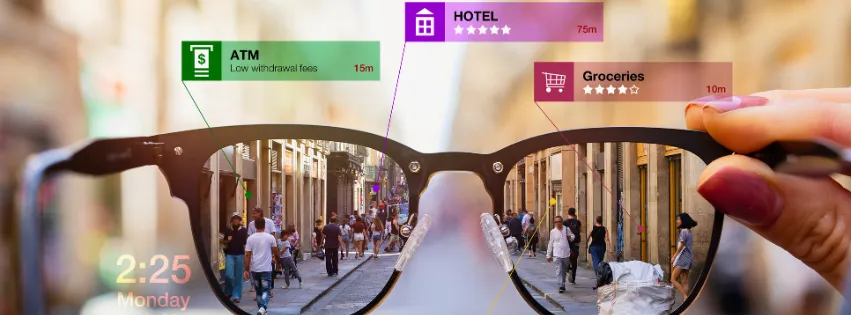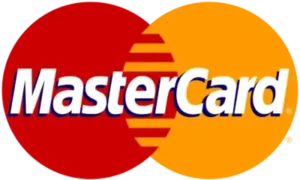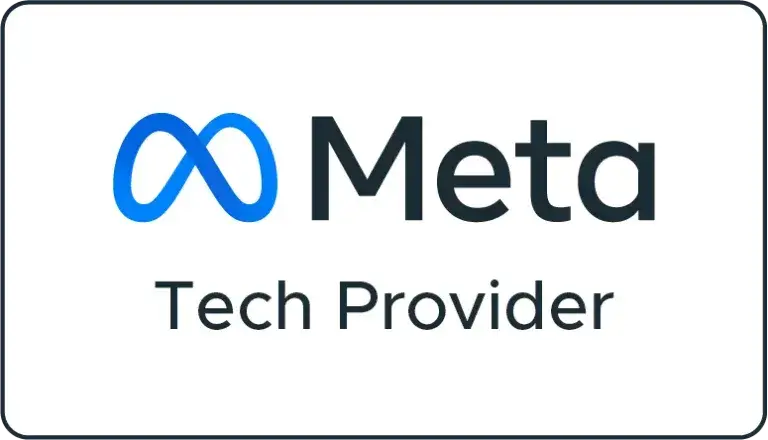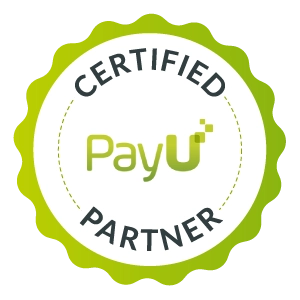
Introduction
User-generated content nowadays, leveraging user-generated content has never been more to scale for brands looking to achieve long-term growth and engagement. Thanks to the development of social networks and communities, the roles have switched from passive receivers of branded messages to active co-creators and shapers of a brand narrative.
User-generated content is what happens when consumers create content. In other words, it’s not produced by the brand but is instead written by the consumer and refers to largely unreflected and highly authentic experiences, opinions, and expressions made by people who have come into contact with a brand, a product or service, and a review or comment. UGC is seen everywhere, from Instagram posts about a favorite product to TripAdvisor reviews of a once-in-a-lifetime trip.
In this blog, we will talk about user-generated content, its possibilities, and manifestations for the brand’s growth. The UGC benefits, ways to stimulate its creation, bright cases, control tools, and evaluation metrics, as well as recommendations and promising trends, will be discussed and unveiled. In conclusion, you will see what a brand can do in social media marketing by using user-generated content.
Understanding User-Generated Content (UGC)
Various types of content created and shared by individuals through different online platforms refer to user-generated content. It is the most reliable way to capture the unfiltered perceptiveness of a client’s experience with the brand, product, or service. Brands interested in using UGC for their brand growth must know the types of UGC and where they come from.
Definition and Types of User-Generated Content:
Some of UGC are, such as but not limited to:
Social media posts: Pictures, videos, status updates, tweets, and Instagram, Facebook, Twitter, Snapchat, and TikTok stories published by users.
Reviews and testimonials: Comments, perceptions, and suggestions from customers on review sites, e-commerce pages, and business listings.
Blogs and forums: Articles, topics, and user feedback on blogs, forums, and community websites.
User-generated videos: YouTube videos, vlogs, and tutorials made by customers sharing their views and experiences on a brand’s products and services.
Creative alliances: Brands-created co-creation ventures, challenges, and contests to promote social media, material creation, and engagement among users.
The most popular UGC formats and platforms are the following:
Social media such as Instagram, Facebook, Twitter, Snapchat, TikTok, LinkedIn, Pinterest.
Review websites including Yelp, TripAdvisor, Google My Business, Amazon, Trustpilot, as well as websites that are specific to reviews for niches.
Community forums like Reddit, Quora, Stack Overflow, and those that are niche-specific based on our interests, hobbies, or industry.
Video-sharing websites like YouTube, Vimeo, Dailymotion, and newer, smaller niche websites for various topics.
In my specialization, as a marketer, the relevant statistics connected to UGC among the target audience that contributed to my performance in this assignment are the following; using the example of an infographic by Stackla reveals that most individuals, or 79 %, recited what usеrs had shаred influenced their purchаsing choicе in a lot of high or medium degree rehabilitative way.
Adweek research found that 85% of users find visual UGC more influential than brand-generated photos or videos.
According to Bazaarvoice publishers, 71% of consumers agree that it is important to read reviews before making a purchase and UGC helps to raise conversion rates by 161% when displayed in plain sight on the product pages.
Knowing the importance and frequency of user-generated content is essential knowledge to be able to tap into its potential to stimulate brand growth and interaction. Becoming familiar with the multiple forms of UGC and different venues where it may be found, brands can purposefully incorporate user-generated content into their market endeavors to increase credibility, promote genuineness and create long-lasting bonds with the public.
Benefits of User-Generated Content for Brand Growth
User-generated content presents numerous advantages to a brand that seeks immense growth and increased engagement. Starting from a higher degree of authenticity to a wider brand coverage, the use of UGC varies and can bring several considerable advantages to the brand’s overall success. Find out the advantages of integrating user-generated content into your marketing strategy:
Increased Authenticity and Credibility:
– UGC provides authentic and genuine perspectives from real customers, which resonates more deeply with audiences than traditional brand messaging.
– Consumers perceive UGC as more trustworthy and credible since it reflects fellow consumers’ unbiased opinions and experiences.
Increased Brand Visibility and Awareness
User-generated content takes your brand to new audiences from different online platforms, increasing visibility for social sharing and engagement. When you share such content, many more customers come across your products or services when their friends share them.
Increased brand visibility and awareness
User-generated content boosts the reach of your brand on numerous online platforms, making it exposed to a much wider demographic as fans share the products online. Moreover, when you share a customer’s post, it introduces your product to their network which, in turn, could also become your customers. The more people who know about your brand, the more your brand is likely to grow.
Increased engagement rate and community development
User-generated content enhances active participation as the audience determines what they would like to see and comment on. For this reason, they feel part of the brand, which creates a sense of community. Customers become your fans, and they desire to work with you.
Less costly content creation and increased scalability
User-generated content is often presented free of charge, which means no coin is spent in creating the content. Brands could continue to spread the word because user-generated content runs like a river. It always continues to flow no matter the situation. A brand’s marketing strategy benefits greatly from adding user-generated content, and it offers many opportunities for long-term brand success. The brands that capitalize on the true essence and power of consumers’ recorded content are strengthening the loyalty of their target consumers, contributing to the development of the brand advocates and, accordingly, the growth of brands’ businesses.
Strategies for Encouraging User-Generated Content
On the surface, the idea of encouraging user-generated content seems a bit intimidating. However, a well-thought-out and calculated approach that inspires and provides your customer base the opportunity to either showcase what your company has to offer or talk about their experiences with your brand is very powerful. Properly executed, brands can boost user engagement, construct an environment of brand ambassadors, and deliver a constant stream of authentic posts. Some established strategies are:
Creating Shareable and Engaging Content:
– Produce engaging content that inspires your target audience to share.
– Craft compelling stories, visuals, and messages that evoke emotions and spark conversation around your brand.
Implementing Branded Hashtags and Challenges:
– Create unique hashtags to encourage the sharing of brand-related content.
– Launch hashtag challenges or campaigns that prompt users to create and share content following a specific theme or prompt.
Running Contests and Giveaways:
– Host contests or giveaways that incentivize users to create and share content in exchange for the chance to win prizes or rewards.
– Encourage participants to submit photos, videos, or testimonials showcasing their use of your products or services.
Leveraging User Testimonials and Reviews:
– Encourage satisfied customers to share their experiences by leaving reviews and testimonials on your website, social media pages, or third-party review platforms.
– Showcase user-generated testimonials and reviews prominently to provide social proof and influence purchasing decisions.
Partnering with Influencers and Brand Advocates:
– Collaborate with influencers, brand ambassadors, or loyal customers with a significant following or influence within your target audience.
– Encourage influencers and advocates to create and share content featuring your brand, products, or services with their followers.
By following the stakeholder experience and user-generated strategies, brand owners will have built a facilitating environment that promotes heavy content production and contribution by users. Through community building and partnership, brands can motivate their users to develop engaging campaigns and be actively engaged in brands’ stories, a force multiplier enabling brand establishment.
Case Studies: Successful Implementation of UGC Strategies
Information and evidence of the UGC strategies that have been effectively adopted by the various brands are the most compelling and convincing evidence about the impact of this particular strategy on brand building . Below, we will provide several examples of well-known case studies that demonstrate the successful UGC experience:
- Airbnb’s #LiveThere Campaign:
#LiveThere is an official campaign, which was created by Airbnb to promote Airbnb, travel, and life as it encourages travelers to share the experience using the designated hashtag.
Airbnb used the Instagram and Facebook posts of its users, coupled with tags of the #LiveThere campaign. This inspired trust by showing off its platform’s extensive and genuine experiences.
Through this, Airbnb received massive social media buzz, and sharing led the increased acquisition and visibility of the brand.
GoPro’s User-Generated Content Hub
GoPro’s mobile app includes a section where users can share the videos and photos they have taken with a GoPro device.
Content that GoPro reposts on its social media and curates from the app builds the GoPro brand of adventure and high energy.
Through the provision of the best user content on its social media pages, GoPro can change the interests that users have in their adventures.
Starbucks’ #RedCupContest

Starbucks #RedCupContest encouraged customers to share the branded pictures of their red cups on their Instagram posts.
By sharing this content, Starbucks fans advertised more love for their brands by sharing more of their holiday adventures.
A huge amount of UGC allowed the customers to go viral, make the competition fun, and gain customers from outside by seeing what they missed on the custom picture of the red Starbucks cup.
Coca-Cola
Coca-Cola personalized its cans and bottles by writing the most intimate names of human beings on cans and bottles and encouraged the people to take pictures of the names and post on social media.
Many people got involved and, by sharing, Coca-cola increased sales because people felt special while capturing their water.
These case studies illustrate the transformative impact of user-generated content on brand growth and engagement. By empowering and incentivizing users to create and share content, brands can tap into the authentic voices of their audience, fostering a deeper connection and driving positive outcomes for their brand.
Tools and Platforms for Managing User-Generated Content
To ensure proper management of user-generated content, the right tools and platforms will be necessary to facilitate the process while maximizing customer engagement and profitability. These tools range from content aggregation to moderation and analytics, all of which will be helpful to a brand that would like to take full advantage of UGC. Some of the recommended tools and platforms are:
Social Media Management Tools:
Scheduling posts and tracking social media mentions, as well as engagement metrics and analytics, can be done for multiple platforms with Hootsuite, Buffer, and Sprout Social. As a result, there is a vast amount of data provided on how UGC performs, allowing brands to easily identify which content is driving engagement to allow them to connect in real-time.
The second type of platform that can help brands achieve UGC success includes TINT, Taggbox, and Pixlee, which allow brands to aggregate UGC from various social media and online sources in one place. Branded accounts can create UGC into customizable feeds or galleries, which can be easily integrated into their websites, digital displays, and promotional campaigns.
Content Moderation Tools
With platforms like Brandwatch, Moderation Hub, and Disqus, brands can monitor and filter UGC to ensure that inappropriate user-generated content is not used and they are compliant with brand safety regulations. AI-powered algorithms and manual moderation tools remove spammy and unrelated content while allowing the originality of UGC.
UGC Rights Management Platforms
UGC rights security systems such as RightsLedger and TINT Rights Management help brands get authorization from writers to publish in their marketing campaigns. These platforms streamlines the entire process, reducing the risk of litigation and preventing copyright infringement.
Analytics and Measurement Tools

Tools like Google Analytics, Socialbakers, and CrowdTangle analyze and
measure the performance of UGC campaigns, giving you information on engagement rates, reach analysis, sentiment analysis, and conversion attribution.
To sum up, with the help of these tools and platforms, the brands can ultimately control and rationalize their UGCs, thus benefiting from brand growth and engagement in digital. Regardless of UGC aggregation, content moderation, rights approaches, or performance analysis, the proper tools can provide the brands with the chance to benefit from tools that can help them leverage the power of user-created for marketing efficacy.
Measuring the Impact of User-Generated Content
Measuring the impact of user-generated content (UGC) is essential for brands to understand the effectiveness of their UGC strategies and optimize future campaigns. By tracking key metrics and analyzing UGC performance, brands can gain valuable insights into audience engagement, brand sentiment, and the overall impact on brand growth. Below are some essential metrics and techniques that can be used to measure the impact of user-generated content (UGC):
Engagement Metrics:
Likes, comments, shares, and retweets — this refers to performance that shows how well and how often people engage with social media posts containing user-generated content.
Click-through rate CTR — another New Performance, it shows how well people get interested in offers or information in links within your user-generated content.
Reach and Impressions:
Reach — a New Performance metric that shows how many different people got quality information, offers, or fun content through your user-generated content across all channels and platforms.
Impressions — this is a source of New Performance that shows the exact number of times people view user-generated content, or that helps determine the gross exposure of your posts and content.
Sentiment Analysis:
Sentiment analysis tools — a monitoring tool, such as Brandwatch or Sprout Social that measures sentiment around brand issues and content based on positive, negative, and neutral criteria. Regularly monitor the sentiment trends to see how brand sentiment change and what to improve or prop up.
Conversion Attribution:
Conversion tracking — a monitoring tool like Google Analytics or any other analytics tool that shows conversion performances like purchases, download, sign-ups you achieved after pitching through user-generated content.
Content performance metrics:
Information about top-performing posts, video content, and reviews made by people is a must-have monitoring tool. Comprehensive analysis of these metrics allows brands to draw meaningful conclusions about the contribution of user-generated content to the overall performance and engagement of your brand. As a result, data-driven insights help brands tailor their UGC strategies, improve and streamline content creation, and ensure greater effectiveness of UGC campaigns aimed at delivering on marketing objectives.
Best Practices for Leveraging User-Generated Content
To realize the full potential of user-generated content, some practices should be followed to guarantee the authenticity and engagement of the content to promote a positive brand. The following is a guide:
Drive User Participation and Engagement:
Develop a user participation culture by relentlessly asking your clients to publish their points of view, feedback, and content dedicated to your brand. Furthermore, engage with their publications. For instance, give preference to quickly responding to user-generated content, such as comments. You need to express gratitude for their contribution while doing so you can establish additional relationships.
Ensure Authenticity and Transparency:
Ensuring that content contains genuine user experiences in the age of digitalization and UGC implies video testimonials and much more. Endeavor to remove edited and overly promotional content.
Curate and Showcase High-Quality Content
– Curate high-quality user-generated content that is consistent with your brand’s values, messaging, and aesthetic.
– Showcase diverse perspectives and experiences to capture the richness and depth of your audience’s interaction with your brand.
Provide Significant Recognition and Incentives
– Provide recognition and incentives to users who generate important UGC, such as shout-outs, features, or members-only rewards.
– Give your audience a good reason to keep participating and creating content with incentives, including discounts, giveaways, and unique access.
Use User-Generated Content Responsibly
– Always respect users’ rights to privacy and use user-generated content in a manner that is consistent with sharing and repurposing while obtaining proper permissions and attributions when necessary.
– Monitor and moderate UGC to ensure everyone follows community standards and prevent the dissemination of toxic or inappropriate content.
Integrate UGC Throughout Marketing
– Utilize UGC throughout marketing platforms, including social media, websites, email marketing, and promotion.
– Enhance the storytelling, customer testimonials, or product demos in your ads by including UGC from consumers.
Measure and Optimize Performance
– Use related metrics and analytical tools to frequently track and assess UGC success.
– Use the insights to refine your UGC approach, determine which UGC creates the most buzz, and enhance your next attempt for leverage.
By following what we picked as the best practices, brands could leverage the power of user-generated content proven to enhance engagement, foster trust, and eventually scale the brand. More so, when brands use the authentic voices and stories of their members, they build friendships that create room for success for all players involved.
Use User-Generated Content Responsibly
– Always respect users’ rights to privacy and use user-generated content in a manner that is consistent with sharing and repurposing while obtaining proper permissions and attributions when necessary.
– Monitor and moderate UGC to ensure everyone follows community standards and prevent the dissemination of toxic or inappropriate content.
Integrate UGC Throughout Marketing
– Utilize UGC throughout marketing platforms, including social media, websites, email marketing, and promotion.
– Enhance the storytelling, customer testimonials, or product demos in your ads by including UGC from consumers.
Measure and Optimize Performance
– Use related metrics and analytical tools to frequently track and assess UGC success.
– Use the insights to refine your UGC approach, determine which UGC creates the most buzz, and enhance your next attempt for leverage.
Future Trends in User-Generated Content and Brand Growth
Therefore, for brands that want to be one step ahead of new possibilities for developing a brand and take the lion’s share of new niches, it is incredibly important to predict the trends of the future in UGC. Along with the development of technology, user behavior is changing, which creates new trends of UGC, which will predetermine the future of digital marketing.
Rise of Short-Form Video Content:
– Short-form video platforms like TikTok and Instagram Reels are gaining popularity, presenting new opportunities for brands to engage with audiences through creative and concise video content.
– Brands will increasingly utilize short-form videos to narrate stories, display products, and interact with audiences dynamically and entertainingly.
Augmented Reality:

AR technology allows brands to create immersive and interactive experiences that bridge the gap between the digital and physical worlds. Advertisements, products, virtual effects will use AR for the actual look at simple plurality, trying on makeup or clothing, engaging in photo op experiences and games that lead to insights and consideration of the brand.
Personalization and Hyper-Targeted Content:
Brands will continue to customize UGC experiences based on individual proclivities, activities, and demographics. Hyper-targeted UGC campaigns, which offer extremely individualized content to niche audience subsets. Brands that leverage UGC to do so will see a high level of user content, allowing them to keep up with continued success. Co-Creation and Collaborative Campaigns:
Often, beginnings will work with customers and influencers in the process of seeking to develop and improve information. ‘Co-creation’ UGC campaigns establish a sense of control and integrity among participants, resulting in increased engagement and promotion. UGC and Integration with E-Commerce:
User-Generated Content With E-commerce:
E-commerce, businesses can share UGC with their items. Combination of e-commerce would be unwise without customer contributions, Stock addition of the item. AI-Powered UGC Technologies and Analytics: Sophisticated AI algorithms will allow the company’s business to draw more from UGC than from a subset.
Since then, brands have had a chance to become successful and grow by adapting the new market landscapes into the field of user-generated content. It will only be beneficial for brands to keep up with the changes and trends and continue to grow participation, engage, and lock in brand loyalty with consumers.
Conclusion
In addition, another tool that taps into the power of user-generated content is not a trend but a strategy but a strategy that brands must have to grow and survive the current digital age. The audience utilizing the chance to turn your audience and users into brand ambassadors and co-creators brings numerous opportunities, thus boosting the brand engagement and rate of growth.
To sum up, throughout this blog, we have covered the importance of UGC for brand perception, brand authenticity, and community building. Brands have discovered how to encourage participation and assess the consequences of UGC campaigns.
As we look ahead, the future of UGC holds even more significant potential, with emerging trends such as short-form video content, augmented reality experiences, and personalized marketing leading the way. Brands can drive business success by connecting with their audience and adapting to changing consumer behaviors.
To sum up, based on the findings, user-generated content is not a new way to enhance a brand’s message, but a better strategy to establish connections, develop credibility and goodwill. With the help of UGC, organizations will be able to reach new levels of growth, sophisticated technologies, and have long-term influence in digital marketing.













